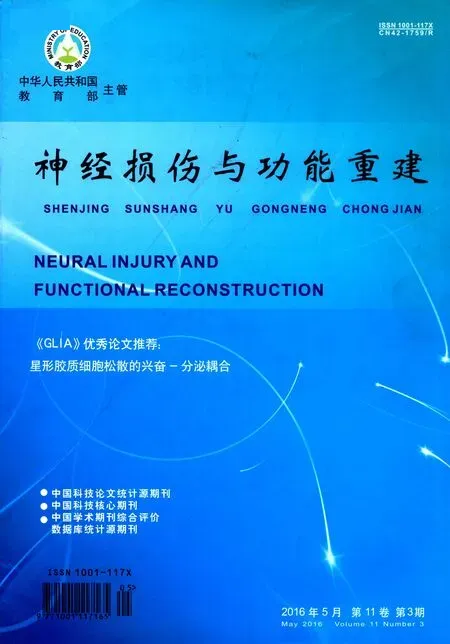Loose Excitation-Secretion Coupling in Astrocytes
Nina Vardjan,Vladimir Parpuraand Robert Zorec
·《GLIA》优秀论文推荐·
Loose Excitation-Secretion Coupling in Astrocytes
Nina Vardjan1,2,Vladimir Parpura3and Robert Zorec1,2
1.Celica Biomedical,Ljubljana,Slovenia;
2.Laboratory of Neuroendocrinology-Molecular Cell Physiology,Institute of Pathophysiology,Faculty of Medicine,University of Ljubljana,Ljubljana,Slovenia;
3.Department of Neurobiology,Center for Glial Biology in Medicine,Civitan International Research Center, Atomic Force Microscopy&Nanotechnology Laboratories,Evelyn F.McKnight Brain Institute,University of Alabama at Birmingham,Birmingham,Alabama
Astrocytes play an important housekeeping role in the central nervous system.Additionally,as secretory cells,they actively participate in cell-to-cell communication,which can be mediated by membrane-bound vesicles.The gliosignaling molecules stored in these vesicles are discharged into the extracellular space after the vesicle membrane fuses with the plasma membrane.This process is termed exocytosis,regulated by SNARE proteins,and triggered by elevations in cytosolic calcium levels,which are necessary and sufficient for exocytosis in astrocytes.For astrocytic exocytosis,calcium is sourced from the intracellular endoplasmic reticulum store,although its entry from the extracellular space contributes to cytosolic calcium dynamics in astrocytes.Here,we discuss calcium management in astrocytic exocytosis and the properties of the membranebound vesicles that store gliosignaling molecules,including the vesicle fusion machinery and kinetics of vesicle content discharge. In astrocytes,the delay between the increase in cytosolic calcium activity and the discharge of secretions from the vesicular lumen is orders of magnitude longer than that in neurons.This relatively loose excitation-secretion coupling is likely tailored to the participation of astrocytes in modulating neural network processing.
calcium homeostasis,GPCR,vesicular release,exocytosis,astrocyte secretion,SNAREs
(王晶编译)
星形胶质细胞松散的兴奋-分泌耦合
星形胶质细胞在中枢神经系统中扮演重要角色。此外,作为分泌性细胞,星形胶质细胞还活跃地参与被膜囊泡介导的细胞间通讯。当囊泡膜与细胞质膜融合时,储存在这些囊泡中的胶质细胞信号分子流出细胞外。这个过程称之为胞吐作用,受SNARE蛋白调节,为细胞内钙水平升高所引起。钙来源于细胞内的内质网储存,它从细胞外的进入归因于星形胶质细胞的细胞钙动力学。本文探讨星形胶质细胞胞吐作用中的钙管理,以及储存胶质细胞信号分子的膜囊泡特性,包括囊泡融合和囊泡内容物流出的机械动力学。在星形胶质细胞中,细胞内钙水平增加和囊泡腔中分泌物流出的延迟略长于神经元。这种相对松散的兴奋-分泌耦合可能根据星形胶质细胞在神经网络调控中的参与来调整。
钙平衡;GPCR;囊泡释放;胞吐作用;星形胶质细胞分泌;SNAREs
R741;R741.02
ADOI10.16780/j.cnki.sjssgncj.2016.03.018
摘自
《Glia》2016;64:655-667

